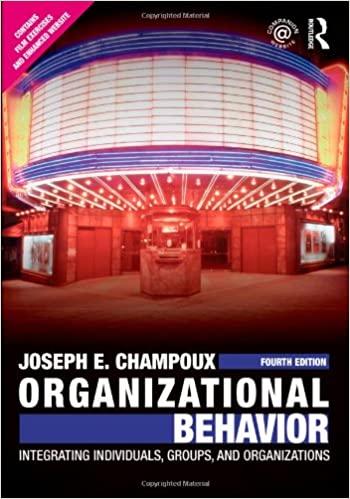Why do organizations often combine organization by function and organization by division? What advantages do organizations get
Question:
Why do organizations often combine organization by function and organization by division? What advantages do organizations get from this more complex hybrid form?
Organizational Design by Division
Organizational design by division uses decentralization as its basic approach. The basis of the decentralized divisions can be the organization’s products, services, locations, customers, programs, or technical processes. A divisional design is especially useful for a strategy focused on different products or services. It is useful when the strategy calls for high customer or client satisfaction with the organization’s products or services. Some organizations are so complex in their relationship with their external environment that they simultaneously use several different bases for a divisional structure.
Organizations often evolve from a functional design to a divisional form. As the external environment changes, managers might need to diversify the organization’s activities to stay competitive. As they add new activities, managers might find that the functional design does not let them manage as efficiently as they must. The solution often tried is moving or evolving the present functional form to a divisional design.
An organization needs a divisional structure when it faces a complex, fastchanging external environment with moderate-to-high uncertainty. Technical processes in divisional organizations often are nonroutine and depend on other parts of the organization. Organizations with continuous process technologies, such as oil and chemical refineries, often use a divisional form. The divisional form focuses attention on costly and potentially dangerous processes. A divisional structure also is a common way to manage large organizations.
Colgate-Palmolive Co. uses a divisional structure based on its major operating areas around the world. The company’s products face distinctly different markets in different world regions. Marketing of Colgate-Palmolive products in the United States likely is different from marketing products in Latin America or in the Asia-Pacific region.
Colgate-Palmolive’s international divisions face sharply different legal and cultural environments in Europe, Latin America, and the Asia-Pacific countries. Grouping international operations into divisions separate from domestic operations lets the international divisions develop specialized skills and abilities for dealing with international questions that do not arise in domestic operations. The divisional organization helps Colgate-Palmolive respond and adapt to differences in product type, product marketing, and cultural differences of its various international locations.
Divisional organizational design emphasizes people’s decision-making autonomy throughout the organization. Individuals at various levels can become more involved in the organization’s basic activities. Decentralized organizations also put individuals in contact with people from many parts of the organization. Such organizations put more demands on individuals’ interpersonal skills than functional organizations. They also often reward behavior that furthers the decentralization goals. Such behavior can focus on a product, customer, service, or location.
Several strengths characterize a divisional design. The organization easily adapts to differences in products, services, clients, locations, and the like. Products can differ not only in how they are manufactured, but also in how they are marketed. Products, services, and customers are highly visible in a divisional structure. The names of products or a broad class of products often appear in the company’s organizational chart.
The divisional structure’s weaknesses come partly from its decentralized qualities. Economies of scale are lost because many organization functions, such as accounting, human resources, and purchasing, are duplicated within each division. Technical specialization is not as focused as in a functional design. Specialists in one division cannot talk readily with similar specialists in another division. Applying human resource and purchasing policies uniformly is also difficult, because decentralized functions are dispersed among the divisions.
Step by Step Answer:

Organizational Behavior Integrating Individuals Groups And Organizations
ISBN: 9780415804646
4th Edition
Authors: Joseph E. Champoux





